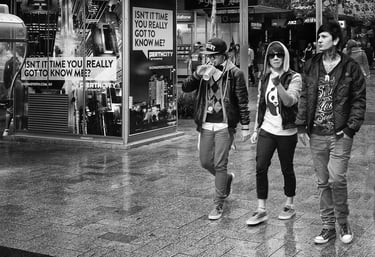Keeping It Real
Post-Processing Tips for Street Photography
PHOTOGRAPHY PERSPECTIVES


So you've captured some cool shots on the streets and now you're ready to dive into post-processing. It's tempting to go all out with editing tools to make your images pop, but the key with street photography is to enhance, not overwhelm. Here’s how to keep your street snaps looking natural and authentic while giving them a bit of polish.
Avoid Overdoing HDR: High Dynamic Range (HDR) can be great for bringing out details in shadows and highlights, but too much HDR can make your photos look surreal and overcooked. For street photography, you want to maintain the scene's original atmosphere, so go easy on the HDR sliders.
Keep Contrast in Check: It’s common to want to crank up the contrast to make your images stand out. While contrast can indeed make your photo more dramatic, too much can lead to lost details and an unnatural appearance. Aim for a balance where the image feels enhanced but still real.
Be Careful with Vignetting: Adding a vignette can draw the viewer’s eye to the centre of the image and can often add a moody element. However, a heavy-handed vignette can look forced. If you decide to vignette, keep it subtle so it doesn’t become the focal point of your photo.
Resist the Urge to Blur Artificially: Sometimes, you might be tempted to blur the background in post to mimic a shallow depth of field. While this can help your subject stand out, artificial blurring often looks exactly that—artificial. If possible, try to achieve this effect in-camera for a more natural look.
Stay True to the Scene: Adding or removing objects in post-processing can sometimes help clean up a composition, but remember, the essence of street photography is capturing life as it is. If you find yourself constantly adding or removing elements, consider spending more time on your shot composition while you’re out shooting.
Keep It Natural: Above all, street photography thrives on authenticity. Your post-processing should aim to reflect the real environment and the genuine moments you’ve captured. This means keeping skin tones natural, preserving the ambient lighting, and avoiding overly dramatic edits that detract from the photo's spontaneity.
By focusing on subtle enhancements rather than major alterations, your post-processed images will resonate with viewers by offering a truthful glimpse into everyday life. Remember, the best street photos are those that feel like a natural window into another world, not a heavily edited depiction.
© Peter Pickering 2024. www.peterpickering.com




